Identifying the Issue with Your Rope Chain
Rope chains are popular among jewelry enthusiasts and are considered a classic design. Unfortunately, just like any other type of jewelry, they can also encounter problems. Identifying these issues can help you better understand how to fix rope chain problems and prevent them from happening again in the future. Here are some of the common issues you may encounter:
1. Knots
Knots are one of the most common problems that can occur with a rope chain. Knots can happen when hair, clothing, or other objects snag on your jewelry. They can also form just from regular wear and tear of your necklace. If you have a knot in your jewelry, you may not be able to wear it until you find a way to undo the knot.
To fix a knot in your rope chain, start by gently pulling on the chain around the knot. This can help loosen it and make it easier to deal with. Once you have enough space to work, use a straight pin or a toothpick to unravel the knot. Be gentle when doing this, and avoid pulling too hard on the chain. You may also want to consider investing in a detangling solution that can help make the knot easier to deal with.
If the knot is too tight to undo, don’t try to force it as you might end up breaking your chain. Instead, take your necklace to a professional jeweler. They have the knowledge and tools needed to fix the knot and restore your jewelry to its previous condition.
2. Twists
Another common issue that you may encounter with your rope chain is twists. Twists occur when the chain becomes wound around itself or other objects, such as your hair or clothing. Twists can cause the chain to look uneven and, in some cases, may even lead to breakage.
To fix a twisted rope chain, start by gently unrolling the chain with your fingers. Be patient and avoid pulling too hard, as this can cause the chain to break. If your chain seems particularly tangled, you may want to try soaking it in warm water for a few minutes. This can help loosen the twists and make it easier to unravel the chain.
Once you have unrolled the chain, try smoothing it out with your fingers. If there are still twists in the chain, you may want to use a pair of tweezers or small pliers to help gently straighten out the links.
3. Broken Links
Over time, it’s common for your rope chain links to break due to regular wear and tear. This can happen when the chain comes into contact with rough surfaces or is yanked or pulled too hard. If your chain has a broken link, it can cause the necklace to look uneven or even fall apart.
If you notice a broken link in your rope chain, don’t panic. A professional jeweler can usually repair the link and restore your chain to its previous condition. If the break is severe or if you don’t have access to a jeweler, you may need to replace the entire chain instead.
4. Tarnishing
Finally, another common issue that rope chain owners may encounter is tarnishing. Tarnishing occurs when the metal in the chain reacts with substances in the environment, such as air or moisture. This can cause the chain to turn black or green and can even cause irritation on your skin.
To fix tarnishing in your rope chain, start by cleaning the chain with a jewelry cleaning solution. Be sure to use a solution that is designed for your specific metal type to avoid causing further damage. Once you have cleaned your jewelry, store it in a dry, air-tight container to help prevent future tarnishing.
In conclusion, it’s essential to keep an eye out for these common problems when owning a rope chain. Remember always to handle your jewelry gently and take it off before participating in activities that may damage it. It’s also crucial to keep your jewelry clean and well-maintained to help it last longer.
Tools Required for Fixing a Rope Chain
Fixing a broken rope chain can be a tricky task that requires the right tools. The tools you need may depend on the type of break and the size of the chain. Here are some of the basic tools you will need to fix your rope chain:
- Jewelry pliers: These are needle-nose pliers with a fine tip that you can use to manipulate small components of the chain. They come in different shapes and sizes, so choose the ones that are most comfortable for you to use.
- Wire cutters: Wire cutters are necessary if you need to remove a broken link or cut a new link to size. These cutters come in different degrees of hardness and size, so make sure you choose the right ones for the job.
- Jewelry hammer: A small jewelry hammer is useful if you need to remove or adjust any of the chain components. Look for a hammer with a nylon or plastic head so as not to damage any of the metal components.
- Jump rings: A jump ring is a small metal ring that you can use to connect two pieces of the chain. Make sure that you choose jump rings that are the same metal and color as the rest of the chain.
- Clasp: A clasp is the component on the end of the chain that you use to fasten the chain. Depending on the type of clasp you choose, you may also need pliers to manipulate the components.
These are the basic tools that you will need to fix your rope chain at home. However, depending on the type of breakage, you may need additional tools and supplies such as a soldering iron or metal glue. If you are unsure about the tools you need, consult a professional jeweler for advice.
Step-by-Step Guide to Fixing a Broken Rope Chain
Rope chain necklaces are delicate pieces of jewelry that are loved for their intricate designs and style. However, even with the utmost care, accidents happen and they may break or get tangled. But, don’t worry, repairing your broken rope chain is not rocket science. In this section, we will outline a comprehensive step-by-step guide on how to fix a broken rope chain easily.
Step 1: Identify the Break
Before you can start fixing your broken rope chain, you need to identify where the break has occurred. Carefully inspect the chain to find the exact point where it is broken. Usually, the break occurs in the middle of the chain or near the clasp. Once you’ve identified the break, hold both ends of the chain with your fingers to keep them in place.
Step 2: Prepare the Tools
After identifying the break in your rope chain, you need to prepare the necessary tools for fixing it. You will need a pair of needle-nose pliers, super glue or jewelry cement, and a jump ring. Note that you can substitute super glue with a welding machine if you prefer.
Step 3: Fixing the Broken Chain
Once you’ve identified the break and gathered the necessary tools, the actual fixing process can begin. Start by using the needle-nose pliers to open a jump ring. Hold your rope chain on both sides of the break and thread them through the open jump ring. After that, use the pliers to close the jump ring properly. You want to ensure that the ends and jump ring are held tightly together. Next, apply a small amount of super glue or jewelry cement on the jump ring to provide extra support and strength. Be sure to use a small amount and ensure that it doesn’t touch the chain or clasp. Finally, allow the glue or cement to dry for a couple of hours before wearing your rope chain again.
With these simple steps, you can fix your broken rope chain easily and efficiently. However, it is important to note that prevention is always better than cure. Ensure that you take proper care of your rope chain to prevent it from breaking in the first place.
Tips for Preventing Future Rope Chain Breaks

A broken rope chain is a total letdown and can be very inconvenient, especially when you’re in a hurry. However, it’s preventable with some precautions and care. Here are some tips on how to keep your rope chain in excellent condition and prevent any future breakages:
Contents
1. Handle with Care
Handle your rope chain with care. Rope chains that get pulled, yanked, or snagged can easily break. Always avoid harsh handling and instead handle the rope chain with care and gentleness.
2. Don’t Overload
Don’t overload the rope chain. A rope chain can only handle so much weight or load, and overloading could lead to breakage. Identify the rope chain’s maximum weight capacity and avoid overloading.
3. Regular Maintenance
Regular maintenance is essential to keep your rope chain in perfect condition. Ensure to clean and lubricate your rope chain on a regular basis to keep it rust-free and running smoothly. Regular maintenance can also help to identify potential issues and nip them in the bud before they become a bigger problem.
4. Keep it Dry
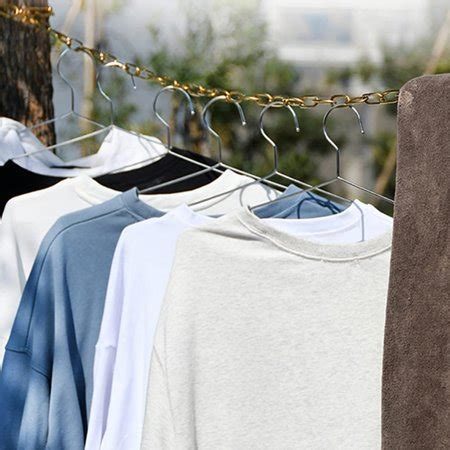
Another essential tip for preventing future rope chain breaks is keeping your rope chain dry. Water or moisture can weaken the metal, which could lead to corrosion and eventually breaking. Ensure to keep your rope chain dry, especially after exposure to moisture. Use a towel or blower to dry it out. If your rope chain gets wet often, you can consider storing it in a dry place or coating it with a rust inhibitor.
5. Proper Storage
Proper storage is also key to keeping your rope chain in perfect condition and preventing any future damages. Always store your rope chain in a safe place, away from direct sunlight, moisture, or harsh environments. You can consider storing it in a container or box specifically designed for storing metal items like a rope chain. Alternatively, you can hang the rope chain on a mounted hook in a room with a regulated temperature and humidity.
6. Handling Extreme Temperatures
Your rope chain’s metal tends to expand or shrink when exposed to extreme temperatures. This expansion or shrinkage could lead to breakages or warping. If possible, avoid exposing your rope chain to extreme temperatures. However, if you have to, ensure to handle it with care, avoid harsh handling, and allow it to cool down or warm up gradually to prevent any sudden shifts in temperature.
7. Avoid Contact with Chemicals
Avoid exposing your rope chain to chemicals such as cleaning agents, fertilizers, and acids, as they can corrode the metal and weaken it. If you have to work with chemicals, ensure to wear protective gear and remove your rope chain before handling the chemicals.
By following these tips, you can be well on your way to preventing future rope chain breaks and ensuring that it serves you for a long time. Rope chains may seem tough, but they still require proper care and handling. So treat them with care, and they will return the favor by serving you well for a long time.
When to Seek Professional Help for Rope Chain Repairs
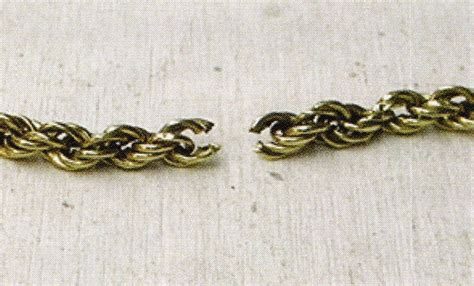
Rope chains are a versatile type of jewellery that can be worn for any occasion. They can be paired with a simple pendant for a casual look or worn alone for a more formal look. However, like any type of jewellery, rope chains are susceptible to wear and tear. If you have a broken rope chain, you may be wondering if you should fix it yourself or seek professional help. Here are some factors to consider before making a decision.
1. Severity of the Damage
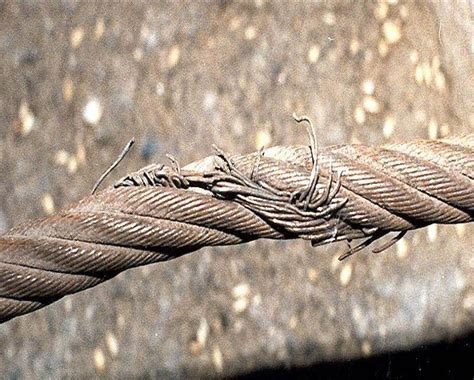
The severity of the damage is the most important factor to consider when deciding whether to fix a rope chain yourself or seek professional help. If the chain is slightly damaged, such as a small knot or kink, it can usually be repaired at home. However, if the chain is severely damaged, such as a broken link or multiple knots, it is best to seek professional help.
2. Material of the Chain
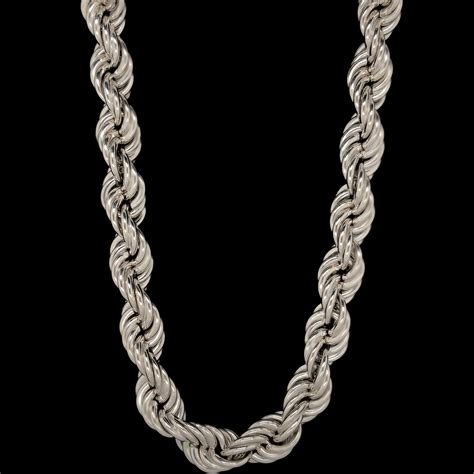
The material of the chain is also an important factor to consider. If the chain is made of a precious metal such as gold or silver, it is best to seek professional help. Precious metals are delicate and can be easily damaged if not handled properly. If the chain is made of a less valuable material such as stainless steel or costume jewellery, it may be possible to fix it yourself.
3. Your Skill Level

Your skill level is another important factor to consider. If you are experienced in jewellery repair and have the necessary tools, you may be able to fix the chain yourself. However, if you are a beginner and do not have the necessary tools or knowledge, it is best to seek professional help. Attempting to fix the chain yourself could result in further damage.
4. Cost of Repair
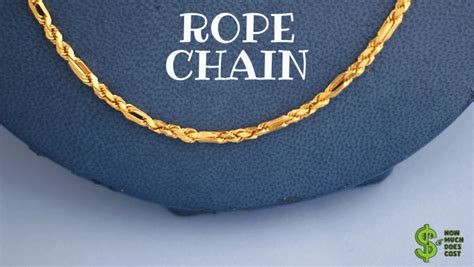
The cost of repair is also an important factor to consider. If the cost of fixing the chain is relatively low, it may be worth attempting to fix it yourself. However, if the cost of repair is high, it may be more cost-effective to seek professional help. A professional jeweller will have the necessary tools and experience to fix the chain properly.
5. Time Constraints

If you have time constraints, it may be better to seek professional help. Attempting to fix the chain yourself could take longer than expected, especially if you are a beginner. A professional jeweller will have the necessary tools and experience to fix the chain quickly and efficiently. This will save you time and ensure that your chain is fixed properly.
In conclusion, there are several factors to consider when deciding whether to fix a rope chain yourself or seek professional help. These include the severity of the damage, the material of the chain, your skill level, the cost of repair, and time constraints. If in doubt, it is best to seek professional help to ensure that your chain is fixed properly and safely.
